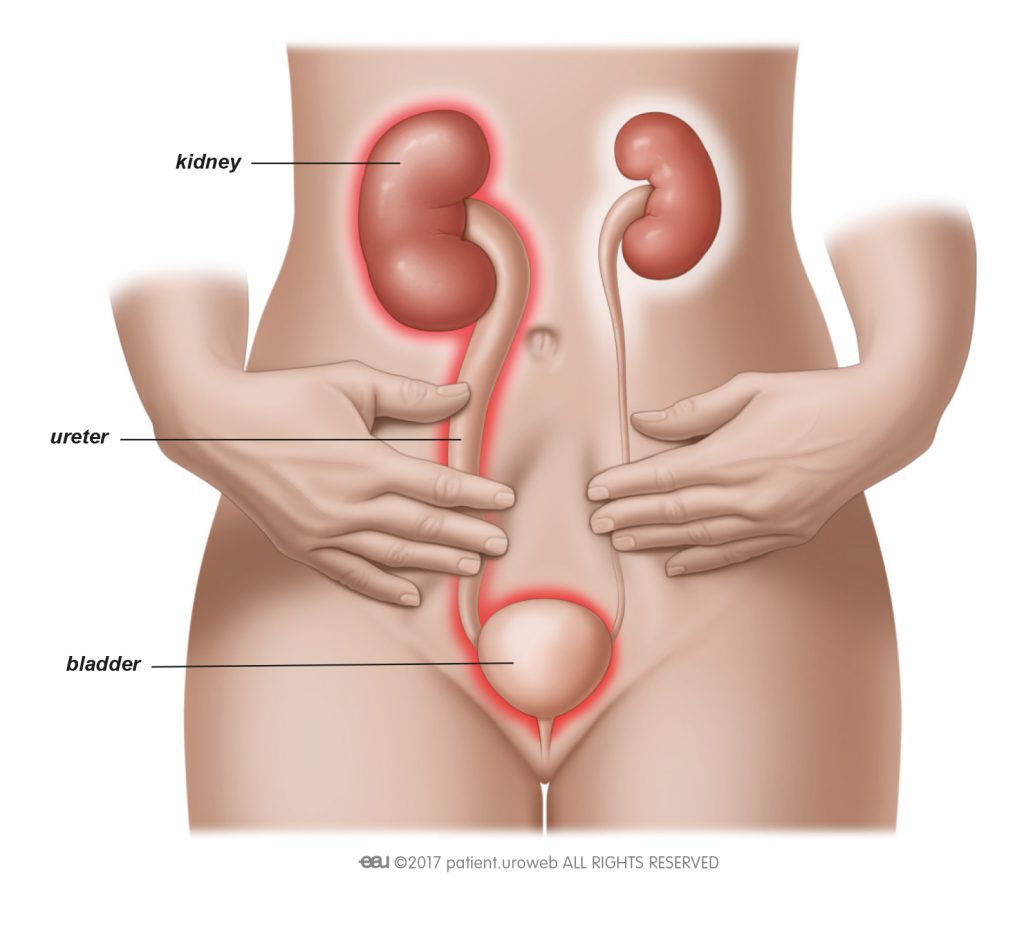Table of Contents
Assisted bladder emptying
Incomplete bladder emptying is a serious risk for urinary tract infection, high pressure inside the bladder (with kidney damage), and incontinence. Methods to improve urination are usually necessary. Methods can be performed outside the body (non-invasive), by putting a device inside the body (invasive), or using drug therapy (pharmacological). An approach should be chosen with your doctor after careful and complete urological assessment.
Bladder expression (Credé maneuver) and urinating by abdominal straining
These maneuvers can help empty the bladder but are rarely recommended. Pressure inside the bladder may rise over acceptable limits and impair kidney function over time (Figure 1). Only in very specific cases may your urologist suggest these techniques. The same applies to triggered reflex voiding, which is possible in some patients—for instance, by repeated light taps on a specific body location—but only following medical advice.
External appliances
These devices are designed to catch urine that leaks during incontinence. Pads and diapers are the most well-known external appliances. For men, a condom catheter with a urine collection device is a practical alternative. Penile clamps should only be used in selected patients and after full medical evaluation.
Neurourological rehabilitation
A variety of techniques are available for rehabilitation of neurourological problems and can be performed in the doctor’s office. Treatments that have shown some positive results for specific neurourological problems include:
- Electrical stimulation of specific nerves
- Pelvic floor muscle training
- Biofeedback
Ask your urologist which methods are available and recommended in your situation.


